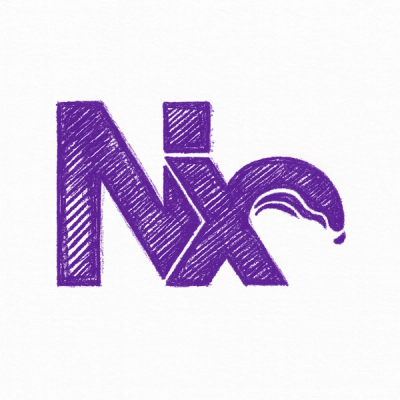
Research
Malicious npm Packages Impersonate Flashbots SDKs, Targeting Ethereum Wallet Credentials
Four npm packages disguised as cryptographic tools steal developer credentials and send them to attacker-controlled Telegram infrastructure.
.. image:: https://github.com/matthiask/feincms3-forms/actions/workflows/tests.yml/badge.svg :target: https://github.com/matthiask/feincms3-forms/ :alt: CI Status
This is an extremely flexible forms builder for the Django admin interface. It
allows using django-content-editor <https://django-content-editor.readthedocs.io/>__ for your form which enables:
If you only want to integrate short and simple forms (e.g. a contact form)
you're probably better off using form_designer <https://github.com/feincms/form_designer>. The feincms3 documentation
contains a guide showing how to integrate it <https://feincms3.readthedocs.io/en/latest/guides/apps-form-builder.html>.
The documentation is very sparse, sorry for that.
Models
FormFieldBase
-------------
Form fields have to inherit ``FormFieldBase``. ``FormFieldBase`` only has a
``name`` field. This field can be checked for clashes etc. The base class is
used instead of duck typing in various places where the code may encounter not
only form field plugins but also other django-content-editor plugins. The
latter are useful e.g. to add blocks of text or other content between form
fields.
The ``FormFieldBase`` model defines the basic API of form fields:
- ``get_fields()``: Return a dictionary of form fields.
- ``get_initial()``: Return initial values of said fields.
- ``get_cleaners()``: Return a list of callables which receive the form
instance, return the cleaned data and may raise ``ValidationError``
exceptions.
- ``get_loaders()``: Return a list of loaders. The purpose of loaders is to
load form submissions, e.g. for reporting purposes. Loaders are callables
which receive the serialized form data and return a dictionary of the
following shape: ``{"name": ..., "label": ..., "value": ...}``.
FormField
---------
The ``FormField`` offers a basic set of attributes for standard fields such as
a label, a help text and whether the field should be required or not. You do
not have to use this model if you want to define your own. It's purpose is just
to offer a few good defaults.
SimpleFieldBase
---------------
The ``SimpleFieldBase`` should be instantiated in your project and can be used
to cheaply add support for many basic field types such as text fields, email
fields, checkboxes, choice fields and more with a single backing database table
and model.
The ``SimpleFieldBase`` has a corresponding ``SimpleFieldInline`` in the
``feincms3_forms.admin`` module which shows and hides fields depending on the
field type. For example, it makes no sense to define placeholders for
checkboxes (browsers do not support them) therefore the field is omitted in the
CMS.
Renderer
The renderer functions are responsible for creating and instantiating the form class. Form class creation and instantiation happens at once.
Validation
The validation module offers utilities to validate a form when it it defined in
the CMS. For example, the backend code may require that an email field always
exists and always has a certain predefined name (for example ``email`` 😏).
These rules are not enforced at the moment but the user is always notified and
can therefore choose to head them. Or bad things may happen depending on the
code you write.
Reporting
~~~~~~~~~
The reporting functions are mostly useful if you want to do something with
submitted data.
Installation and usage
======================
Create a module containing the models for the form builder (``app.forms.models``):
.. code-block:: python
from content_editor.models import Region, create_plugin_base
from django.db import models
from feincms3 import plugins
from feincms3_forms import models as forms_models
class ConfiguredForm(forms_models.ConfiguredForm):
FORMS = [
forms_models.FormType(
key="contact",
label="contact form",
regions=[Region(key="form", title="form")],
# Base class for the dynamically created form:
# form_class="...",
# Validation hook for configured form (the bundled ModelAdmin
# class calls this):
# validate="...",
# Processing function which you can call after submission
# (feincms3-forms never calls this function itself, but it
# may be a nice convention):
process="app.forms.forms.process_contact_form",
),
]
ConfiguredFormPlugin = create_plugin_base(ConfiguredForm)
class SimpleField(forms_models.SimpleFieldBase, ConfiguredFormPlugin):
pass
Text = SimpleField.proxy(SimpleField.Type.TEXT)
Email = SimpleField.proxy(SimpleField.Type.EMAIL)
URL = SimpleField.proxy(SimpleField.Type.URL)
Date = SimpleField.proxy(SimpleField.Type.DATE)
Integer = SimpleField.proxy(SimpleField.Type.INTEGER)
Textarea = SimpleField.proxy(SimpleField.Type.TEXTAREA)
Checkbox = SimpleField.proxy(SimpleField.Type.CHECKBOX)
Select = SimpleField.proxy(SimpleField.Type.SELECT)
Radio = SimpleField.proxy(SimpleField.Type.RADIO)
SelectMultiple = SimpleField.proxy(SimpleField.Type.SELECT_MULTIPLE)
CheckboxSelectMultiple = SimpleField.proxy(SimpleField.Type.CHECKBOX_SELECT_MULTIPLE)
class RichText(plugins.richtext.RichText, ConfiguredFormPlugin):
pass
Add the processing function referenced above (``app.forms.forms``):
.. code-block:: python
from django.core.mail import mail_managers
from django.http import HttpResponse
def process_contact_form(request, form, *, configured_form):
mail_managers("Contact form", repr(form.cleaned_data))
return HttpResponseRedirect(".")
Add the renderer and the view (``app.forms.views``):
.. code-block:: python
from content_editor.contents import contents_for_item
from django.shortcuts import render
from feincms3.renderer import RegionRenderer, render_in_context, template_renderer
from feincms3_forms.renderer import create_form, short_prefix
from app.forms import models
renderer = RegionRenderer()
renderer.register(models.RichText, template_renderer("plugins/richtext.html"))
renderer.register(
models.SimpleField,
lambda plugin, context: render_in_context(
context,
"forms/simple-field.html",
{"plugin": plugin, "fields": context["form"].get_form_fields(plugin)},
),
)
def form(request):
context = {}
cf = models.ConfiguredForm.objects.first()
contents = contents_for_item(cf, plugins=renderer.plugins())
# Add a prefix in case more than one form exists on the same page:
form_kwargs = {"prefix": short_prefix(cf, "form")}
if request.method == "POST":
form_kwargs |= {"data": request.POST, "files": request.FILES}
form = create_form(
contents["form"],
form_class=cf.type.form_class,
form_kwargs=form_kwargs,
)
if form.is_valid():
return cf.type.process(request, form, configured_form=cf)
context["form"] = form
context["form_other_fields"] = form.get_form_fields(None)
context["form_regions"] = renderer.regions_from_contents(contents)
return render(request, "forms/form.html", context)
The ``forms/simple-field.html`` template referenced above might look as
follows:
.. code-block:: html+django
{% for field in fields.values %}{{ field }}{% endfor %}
An example ``forms/form.html``:
.. code-block:: html+django
{% extends "base.html" %}
{% load feincms3 i18n %}
{% block content %}
<div class="content">
<form class="form" method="post">
{% csrf_token %}
{{ form.errors }}
{% render_region form_regions 'form' %}
{% for field in form_other_fields.values %}{{ field }}{% endfor %}
<button type="submit">Submit</button>
</form>
</div>
{% endblock content %}
Finally, the form would have to be added to the admin site (``app.forms.admin``):
.. code-block:: python
from content_editor.admin import ContentEditorInline
from django.contrib import admin
from feincms3 import plugins
from feincms3_forms.admin import ConfiguredFormAdmin, SimpleFieldInline
from app.forms import models
@admin.register(models.ConfiguredForm)
class ConfiguredFormAdmin(ConfiguredFormAdmin):
inlines = [
plugins.richtext.RichTextInline.create(model=models.RichText),
SimpleFieldInline.create(
model=models.Text,
button='<i class="material-icons">short_text</i>',
),
SimpleFieldInline.create(
model=models.Email,
button='<i class="material-icons">alternate_email</i>',
),
SimpleFieldInline.create(
model=models.URL,
button='<i class="material-icons">link</i>',
),
SimpleFieldInline.create(
model=models.Date,
button='<i class="material-icons">event</i>',
),
SimpleFieldInline.create(
model=models.Integer,
button='<i class="material-icons">looks_one</i>',
),
SimpleFieldInline.create(
model=models.Textarea,
button='<i class="material-icons">notes</i>',
),
SimpleFieldInline.create(
model=models.Checkbox,
button='<i class="material-icons">check_box</i>',
),
SimpleFieldInline.create(
model=models.Select,
button='<i class="material-icons">arrow_drop_down_circle</i>',
),
SimpleFieldInline.create(
model=models.Radio,
button='<i class="material-icons">radio_button_checked</i>',
),
]
And last but not least, create and apply migrations. That should be basically
it. We haven't touched validating the configured form, reporting utilities or
creating your own (compound) field types yet, for now you have to check the
testsuite.
FAQs
Unknown package
We found that feincms3-forms demonstrated a healthy version release cadence and project activity because the last version was released less than a year ago. It has 2 open source maintainers collaborating on the project.
Did you know?

Socket for GitHub automatically highlights issues in each pull request and monitors the health of all your open source dependencies. Discover the contents of your packages and block harmful activity before you install or update your dependencies.

Research
Four npm packages disguised as cryptographic tools steal developer credentials and send them to attacker-controlled Telegram infrastructure.

Security News
Ruby maintainers from Bundler and rbenv teams are building rv to bring Python uv's speed and unified tooling approach to Ruby development.

Security News
Following last week’s supply chain attack, Nx published findings on the GitHub Actions exploit and moved npm publishing to Trusted Publishers.